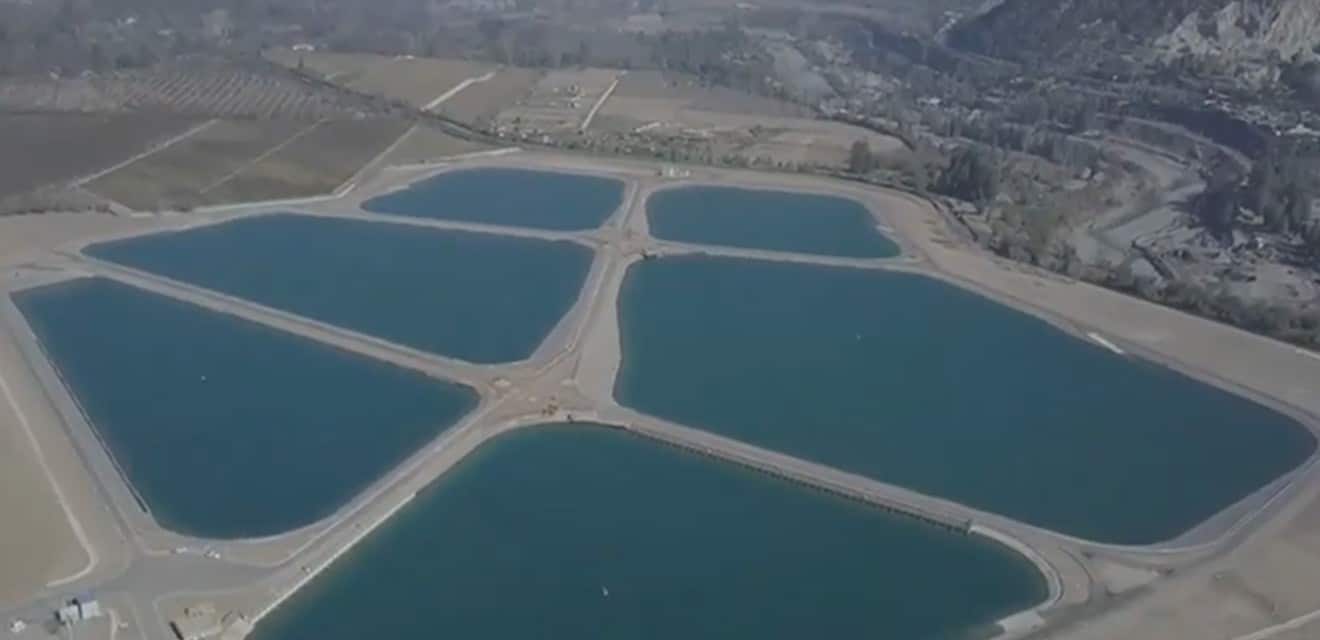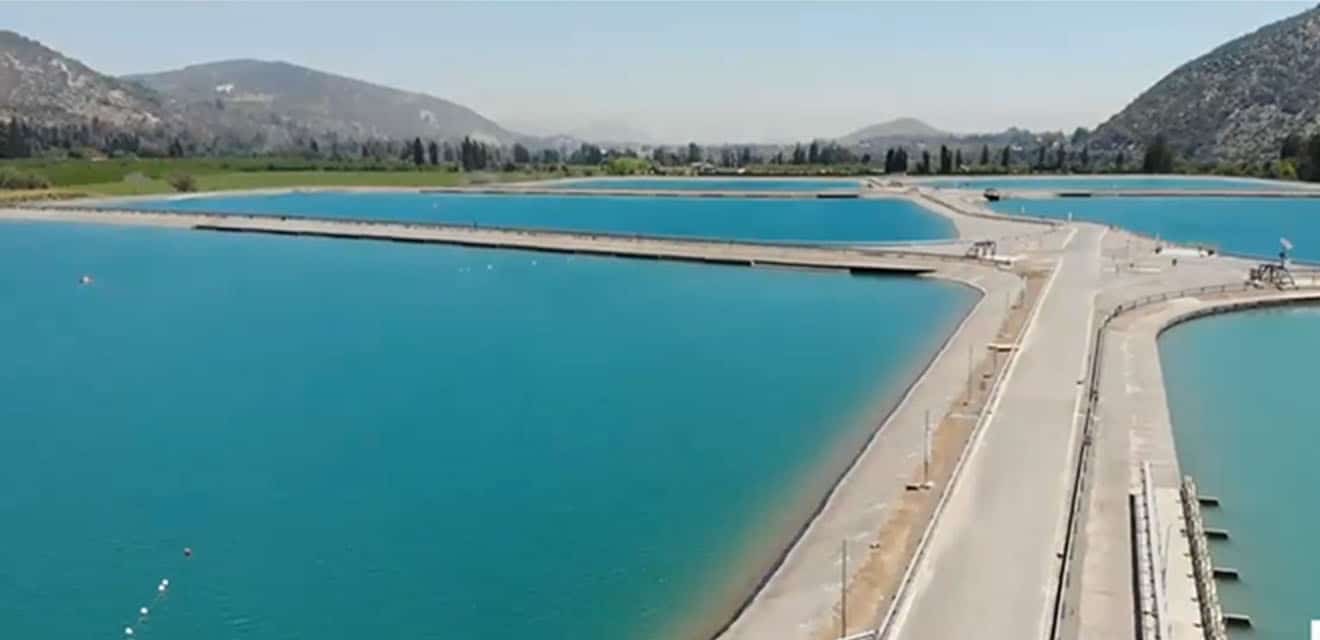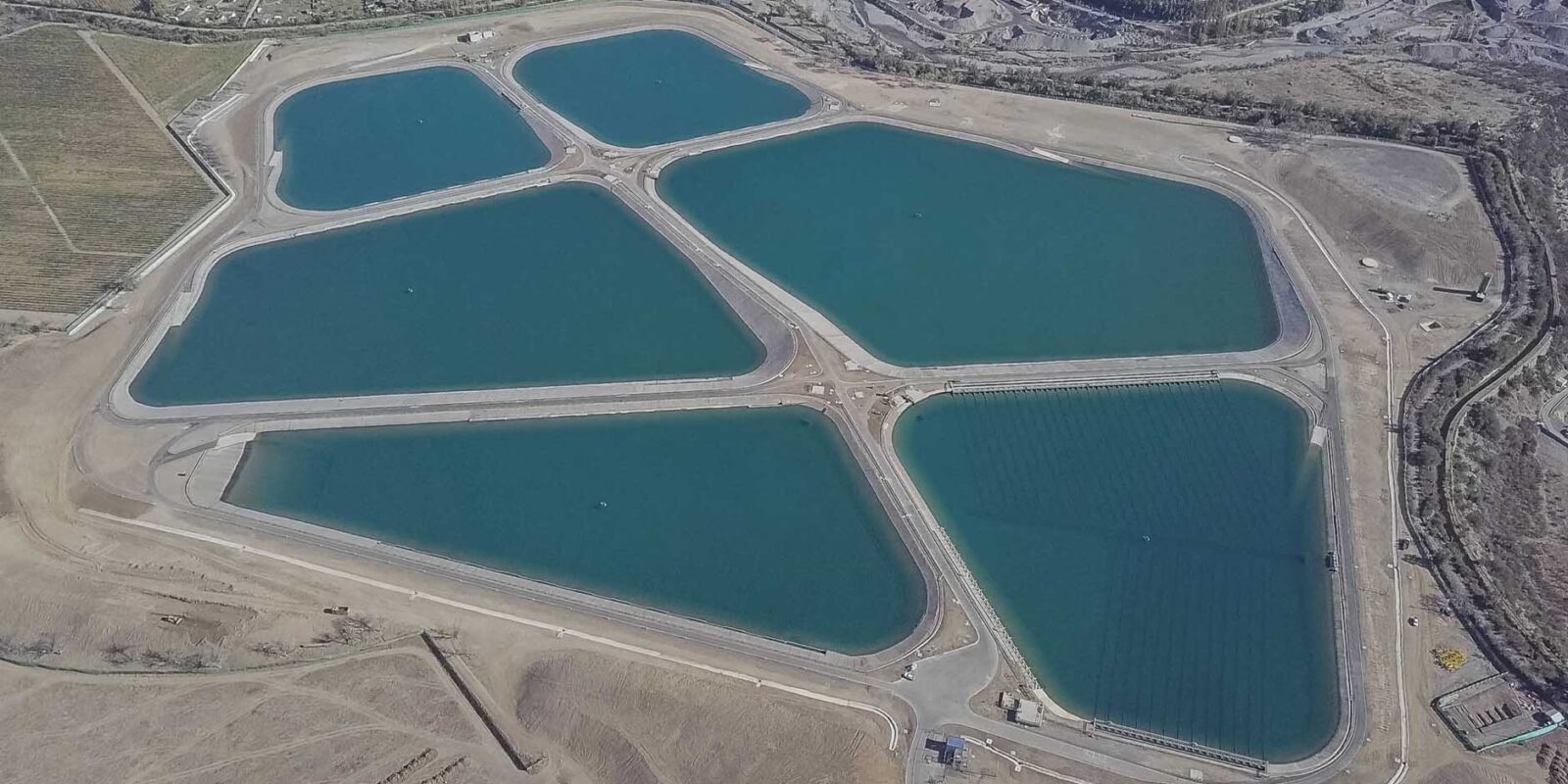In short
- The Pirque Mega Ponds were built to protect the water supply amid unexpected events;
- This project was developed with the MPC-Buoy in mind due to its proven success in controlling algae;
- The utility can protect its employees and water supply if a crisis occurs, such as in extreme weather or during a pandemic.
Aguas Andinas is a multi-service company supplying drinking water, sewerage, and wastewater treatment services in Santiago.
With its subsidiaries, the utility provides its services to approximately 8.5 million people. In a joint effort between the public and private sector, Aguas Andinas built the Pirque Mega Ponds – a new infrastructure to protect the water supply amid unexpected events.
Climate change, a catalyst for harmful algae blooms
Major rainfalls used to occur during the winter. Due to precipitation, an ice cover was formed in the Andes mountains. Santiago’s residents relied on this melted ice cover as a source of drinking water. Due to climate change, rainfall now occurs during warmer months. Heavy rain in summer causes landfalls, detaching large particles from the hills. These particles, along with mud, fall into the river and infiltrate the waterworks.
Water treatment processes become longer, threatening the continuity of the water supply. Heavy rainfalls and warm temperatures create the ideal conditions for algal blooms to occur. And climate change accelerates their frequency, severity, and persistence.
To preserve the water quality in the Pirque Mega Ponds, Aguas Andinas installed an ultrasonic system, called MPC-Buoy, in each of their six ponds. The project was developed with the MPC-Buoy technology in mind due to its proven success in controlling algae growth in the La Dehesa dam.

With the condition of the water supply becoming increasingly unstable as climate change takes its toll on the country, how can water providers prepare for and prevent a crisis? The answer lies in monitoring — companies need to track changes in their water supply to identify problems before they produce damage.
Benefits of remote water resource management
The MPC-Buoy is an ultrasonic system that monitors, predicts, and controls algal blooms in real-time. This innovation measures key water parameters and sends this information to an online software, allowing utilities to be proactive in responding to unexpected events.
Aguas Andinas finds the real-time monitoring feature of the MPC-Buoys valuable. Besides having immediate access to biochemical information, they also receive alerts if the water quality changes. This means the utility can easily determine if it complies with the SEA Chile regulations. And more important, it can protect both its employees and the water supply if a crisis occurs, such as in extreme weather or during a pandemic.

During the COVID-19 lockdowns, the utility could rely on the MPC-Buoys’ in-line sensors to keep operations afloat if a loss in personnel occurs. By managing the water resource remotely, the utility could also avoid the risk of endangering employees during their site visits. As the buoys offered real-time information about what’s happening in the water, there was no need for people to assess the situation physically.
Therefore, the Chilean company relied on real-time monitoring to ensure an uninterrupted water supply to the citizens of Santiago. Besides, the six ponds play a critical role in another consequence of climate change – drought. In 2020, two severe forest fires broke out. Helicopters could land on the Pirque Mega Ponds and collect water to extinguish the fire.
About the Pirque Mega Ponds
In November 2020, Aguas Andinas inaugurated a new water infrastructure for the city of Santiago. It comprises six ponds with an area equal to 50 soccer fields. The storage capacity of the ponds is approximately 1,500 million liters. This guarantees 34 hours of water autonomy without relying on the Maipo River as a water source. To compare, in 2011, Santiago had water autonomy of 4 hours.
“With this, Santiago becomes the most advanced Latin American city in terms of ensuring the supply of drinking water. Here is the possibility of supplying the entire urban Metropolitan Region for 34 hours, in the most complex scenario of all the water capture being cut off at some point,” said Felipe Guevara, mayor of Santiago City.
The impact of climate change became visible in Santiago at the beginning of 2013. High turbidity in the Maipo River forced the water supply to be cut off, gravely affecting 25 neighboring communes. In response to these events, a new infrastructure plan was developed. The goal was to ensure a continuous supply of clean and safe drinking water to the Metropolitan Region.
